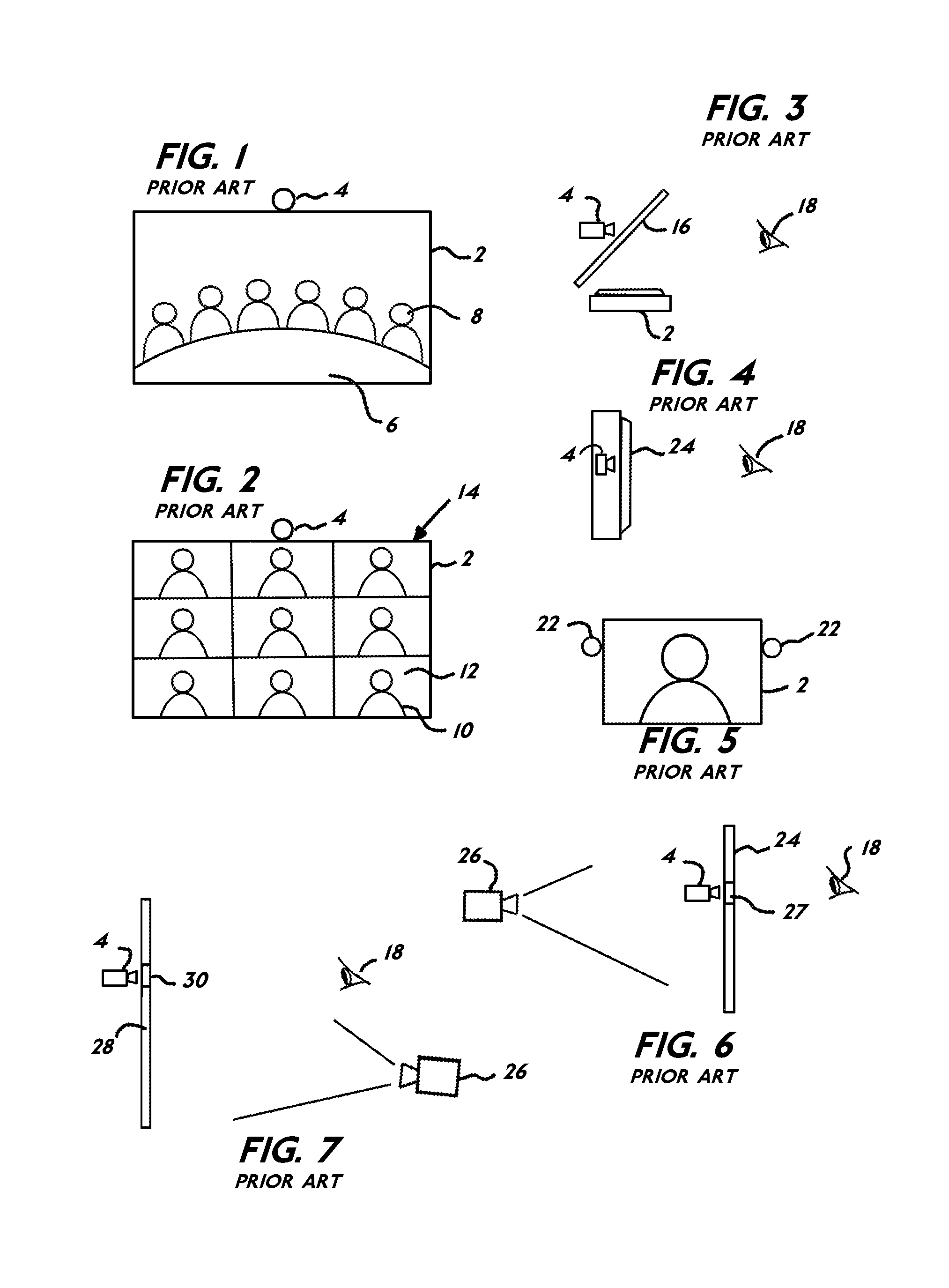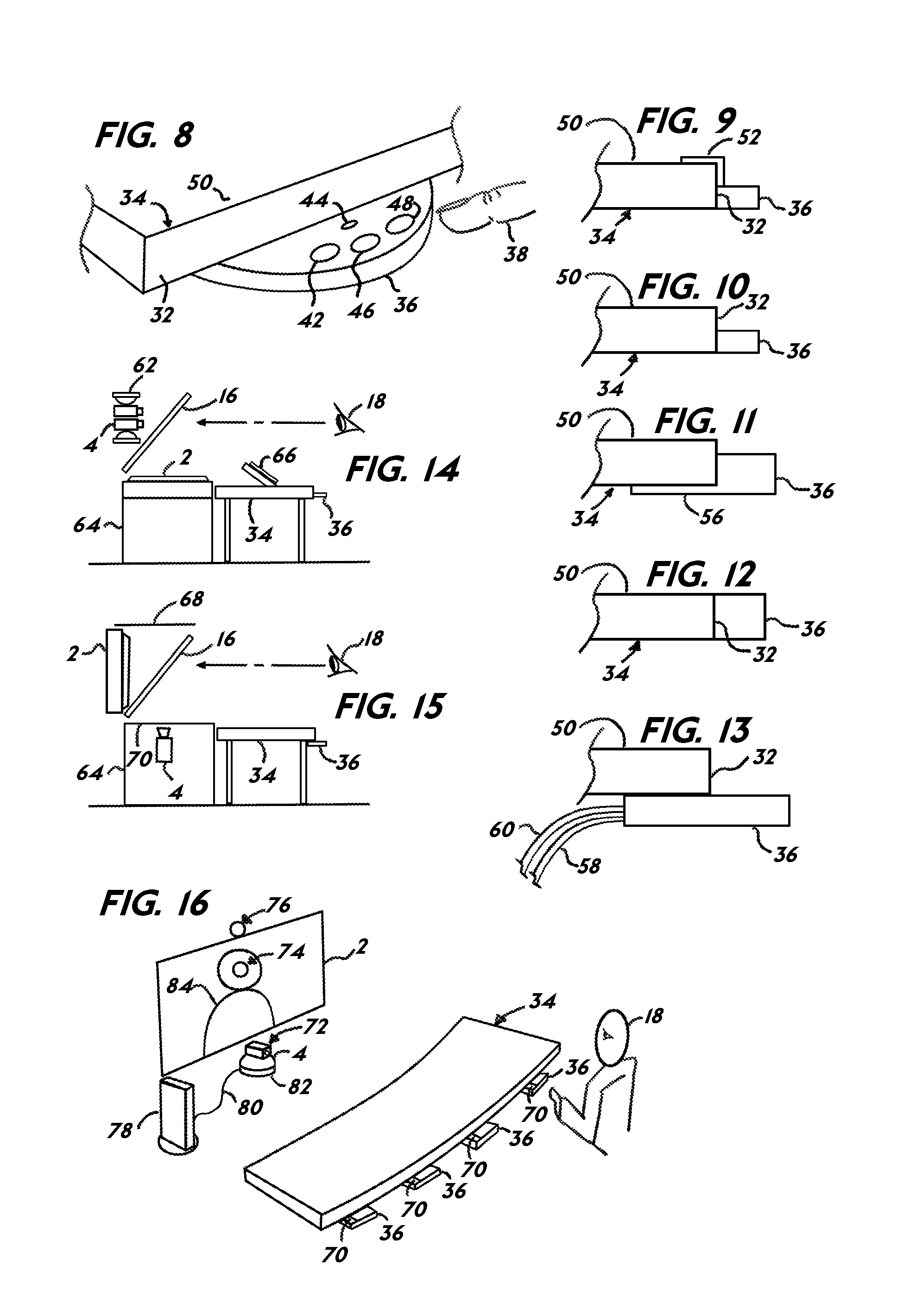Telepresence eye contact display
a technology of eye contact display and telepresence, which is applied in the field of telepresence communication terminals and systems, can solve the problems of videoconferencing cost, videoconferencing quality and speed of adoption, and videoconferencing cost, and achieve the effects of improving human factor experience, high contrast, and high brightness
- Summary
- Abstract
- Description
- Claims
- Application Information
AI Technical Summary
Benefits of technology
Problems solved by technology
Method used
Image
Examples
Embodiment Construction
[0057]The following description is provided to enable any person skilled in the art to make and use the invention and sets forth the best modes contemplated by the inventor of carrying out his invention. Various modifications, however, will remain readily apparent to those skilled in the art, since the general principles of the present invention have been defined herein specifically to provide an improved telepresence communication system
[0058]Telepresence Communication System
[0059]The present invention aims to create a fully enabled telepresence system from the terminal design to the network and the functionality of the terminals in the network. Telepresence, unlike videoconferencing, is specifically focused on substantially improving the human factor design and video quality of the communication experience. Common videoconferencing usually operates at a resolution far less than TV. Poor image quality affects the realism of the person imaged in display. All the embodiments of the p...
PUM
 Login to View More
Login to View More Abstract
Description
Claims
Application Information
 Login to View More
Login to View More - R&D
- Intellectual Property
- Life Sciences
- Materials
- Tech Scout
- Unparalleled Data Quality
- Higher Quality Content
- 60% Fewer Hallucinations
Browse by: Latest US Patents, China's latest patents, Technical Efficacy Thesaurus, Application Domain, Technology Topic, Popular Technical Reports.
© 2025 PatSnap. All rights reserved.Legal|Privacy policy|Modern Slavery Act Transparency Statement|Sitemap|About US| Contact US: help@patsnap.com



